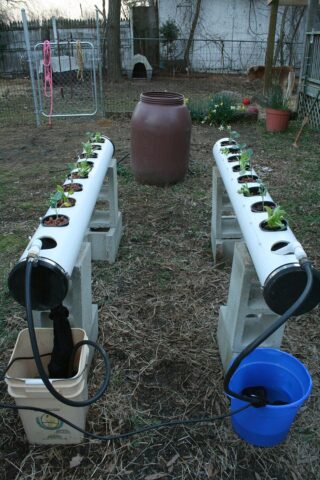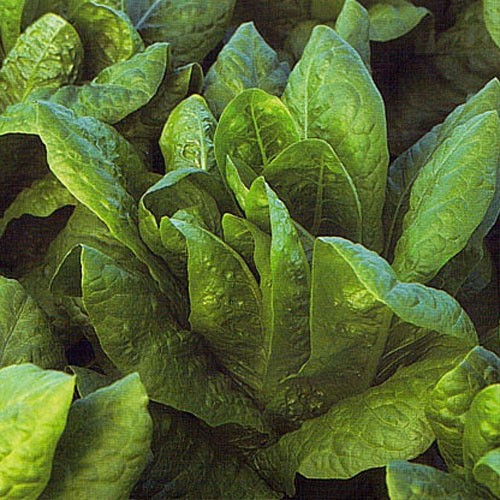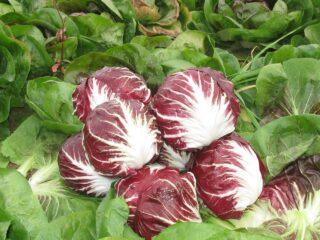Content
Hydroponic salad involves growing a crop in an artificial environment; no soil is used. The system completely provides the plant with nutrients, allows you to regulate the temperature and humidity of the environment, intensity, duration of lighting and other factors.
Is it possible to grow lettuce hydroponically?
Growing lettuce hydroponically at home is not only possible, but also effective. The method provides the following advantages:
- rapid growth of culture;
- providing all necessary nutrients;
- high yield – an increase of several times is possible;
- no need for constant watering;
- no soil pests;
- environmental cleanliness;
- There are practically no weeds.
Principle of the method
Hydroponics involves the use of a nutrient solution. Lettuce roots are immersed in it, which draw out the elements necessary for growth and development.An automatic supply of nutrient solution is provided, which greatly facilitates crop care.
Hydroponic systems are either passive or active. The former are also called wick. The nutrient solution arrives without mechanical impact due to capillary forces. In active hydroponics, liquid circulates, so a pump is needed. In parallel, an aeration system is usually required.

Growing lettuce in hydroponics is less labor intensive than in soil, using less water and nutrients
How long does lettuce grow in hydroponics?
The timing of growing lettuce hydroponically depends on the variety. The duration and brightness of the lighting also matters. The process usually takes 30-45 days. When growing for food for yourself, you can use small young leaves after 2.5-3 weeks.
Choosing a lettuce variety for hydroponics
Both leaf and head lettuce are suitable for hydroponics. The following types of culture are recommended for the flow method:
- Aficion;
Aficyon - dense light green leaves, forcing takes about 30 days, resistance to bolting, marginal necrosis
- Starfighter;
Starfighter has characteristics similar to the previous variety, but the color is rich dark green
- Aktarus;
Actarus has long and thin leaves, high resistance to marginal burns and internal necrosis
- Murai;
Murai is an oak-leaved variety, it has red leaves, a large voluminous rosette, and resistance to bolting
- Maximus.
The Maximus variety has a large rosette of vertically standing rich green leaves, high endurance, and resistance to bolting
Methods for growing lettuce hydroponically
There are several main types of system, each with its own characteristics and advantages. First you need to grow lettuce seedlings for hydroponics. Seeds are usually sown in cassettes with peat substrate. Be sure to keep it well hydrated. Instead of peat cassettes, cotton wool or moss are also used.
The seeds are sprinkled with a thin layer of substrate or dispensed with. Germination in a chamber at 100% humidity and a temperature of 18-20 °C takes 1-3 days.
Before germination, seeds are soaked in water at room temperature. To speed up the process, growth stimulants such as Epin and Cytovit are used.
Floating platform
This method is also called deep water culture system, DWS or WaterFarm. It involves a tank and an aeration device. The container is filled with a nutrient solution in which only the lettuce roots are immersed. The above-ground part of the plant is located on a foam platform.
The substrate in a floating platform system is usually expanded clay. Throughout the season, use one solution, adding the necessary substances and water as necessary.

The process of growing lettuce with such a hydroponic system is continuous - one platform is removed, immediately installing another
It's easy to make DIY floating platforms for hydroponic lettuce growing. To do this you need:
- a container of a suitable size that does not allow light to pass through - you can cover it with black paint or wrap it in foil;
- hydroponic pots – you can buy them or make them yourself from plastic yogurt jars;
- sheet foam - thickness 20-30 mm, width and length according to the internal dimensions of the container;
- air compressor for aquarium;
- substrate – expanded clay, gravel, coconut shavings;
- nutrient solution - it is better to use a ready-made preparation, diluting it according to the instructions.
The system preparation algorithm is simple:
- Make holes in the foam sheet corresponding to the size of the pots - they should be placed freely, but not fall through.
- Prepare the nutrient solution according to the instructions.
- Fill a large container with the solution.
- Assemble the unit by connecting the air compressor.
- Fill the pots with substrate.
- Insert the containers into the holes of the foam sheet so that the bottom does not reach the liquid by about 5-10 mm.
After such preparation, all that remains is to plant the lettuce in hydroponics. This is done after it has germinated. Transplanting lettuce into hydroponics is carried out carefully so as not to damage the root system.

When growing lettuce hydroponically, you should monitor the pH level and concentration of the nutrient solution
Dry hydroponics
The dry method is called because of the air pocket that separates the root system and the above-ground part of the plant. This imitates normal natural conditions and has a good effect on yield and ripening time. The main disadvantage of the method is the need for two containers for different microelements. Mixing them causes a reaction leading to precipitation.
Flow-through nutrient layer
This hydroponics system is also called the NFT method.This method is the most common for growing lettuce and culinary herbs.
The NFT installation ensures constant circulation of the nutrient solution, and its layer is thin. Water and air have a large contact area. Nutrients are distributed and washed out evenly. This allows you to minimize labor - you only need to periodically add water and trace elements. Focus on the workload of the installation. It’s easy to make an NFT system yourself.

In the NFT installation, only the root tips are placed in the solution, but the majority of the underground part of the lettuce is provided with 100% humidity.
Greenery care
For growing lettuce hydroponically, the optimal temperature is 18-25 °C. If the room is too hot, the flowering phase will begin faster. This has a bad effect on the taste of the leaves; bitterness appears in it.
The crop needs good lighting, so LED phyto- or standard table (wall) lamps are used. In summer there is usually no need for them. Additional illumination is mandatory in early spring and autumn-winter.
For the first three days, it is recommended to provide round-the-clock lighting so that the lettuce sprouts do not stretch. After that, 12-16 hours is enough.
When growing lettuce hydroponically, be sure to control the nutrient solution. It is necessary to add water and the necessary substances in a timely manner. Once every 2-4 weeks, it is recommended to completely refresh the nutrient solution.
The room for growing hydroponic lettuce must be well ventilated. If this is not possible, install a small ceiling fan at minimum speed.Light airflow is important to reduce the risk of marginal burns.
Conclusion
Hydroponic lettuce is an effective way to quickly grow a crop at home. This system does not require soil, but does require a nutrient solution. It is used for root dipping or drip spraying. For beginners, it is better to use a ready-made preparation to dilute the solution.













